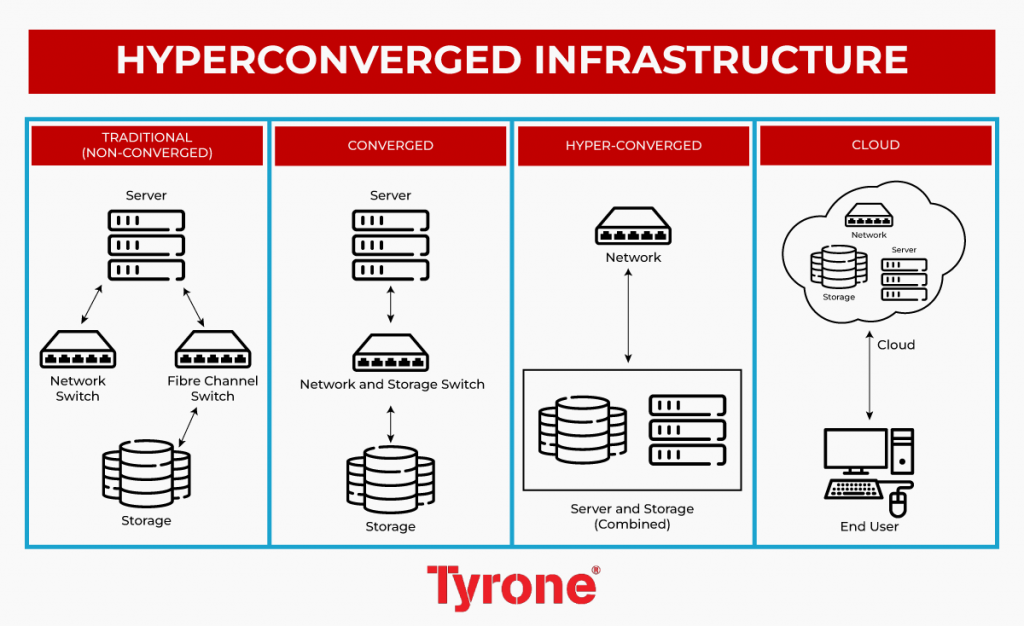Imagine managing your entire data center infrastructure – servers, storage, networking – as a single, unified system. Sounds like a dream, right? For many organizations grappling with the complexities and costs of traditional IT infrastructure, it’s becoming a reality, thanks to hyperconverged systems.
These innovative solutions are revolutionizing how businesses manage their data, offering a simpler, more efficient, and scalable approach. But what exactly is hyperconvergence, and why is it generating so much buzz? This article delves into the core concepts behind hyperconverged infrastructure (HCI), exploring its benefits, key considerations for implementation, and how it can address common challenges related to data center management.
Get ready to discover how HCI can streamline your IT operations and unlock new levels of agility and cost-effectiveness.
Understanding Hyperconverged Infrastructure (HCI)
Hyperconverged infrastructure represents a significant shift in how organizations manage their data centers. It consolidates computing, storage, networking, and virtualization resources into a single, cohesive system.
This integrated approach simplifies management, reduces complexity, and enables greater agility. Think of it as a pre-packaged data center in a box, ready to handle various workloads.
With HCI, businesses can break free from the constraints of traditional infrastructure silos. They gain enhanced scalability, improved resource utilization, and streamlined operations.
Ultimately, HCI empowers organizations to focus on innovation rather than wrestling with the intricacies of managing separate systems. It’s about getting more done with less hassle.
The Core Components of a Hyperconverged System
At the heart of any HCI solution lie software-defined compute, storage, and networking. These elements work together to deliver a unified infrastructure platform.
The software-defined aspect allows for centralized management and automation. This means fewer manual tasks and quicker responses to changing business needs.
Virtualization is also a crucial component, as it enables multiple workloads to run on a single physical server. This maximizes resource utilization and reduces hardware costs.
Data virtualization allows the access and control of data without any technical details about the data, such as location and organization.
Furthermore, HCI systems typically include advanced data management features like replication, backup, and disaster recovery. These ensure data protection and business continuity.
Benefits of Adopting Hyperconverged Infrastructure
The advantages of HCI are numerous, ranging from cost savings to increased efficiency. One of the most compelling benefits is its streamlined management capabilities.
Instead of juggling multiple tools and vendors, IT teams can manage the entire infrastructure through a single interface. This simplifies operations and reduces the risk of errors.
HCI also offers significant scalability benefits. Organizations can easily add or remove resources as needed, without disrupting existing workloads.
Improved performance is another key advantage. By eliminating bottlenecks and optimizing resource allocation, HCI can deliver faster application response times.
Considerable cost savings also come from reduced hardware footprint, power consumption, and administrative overhead. These savings can free up budget for other strategic initiatives.
Use Cases for Hyperconverged Infrastructure

HCI is versatile and can be applied to a wide range of use cases. It’s particularly well-suited for organizations looking to modernize their data centers.
Virtual Desktop Infrastructure (VDI) is a popular use case, as HCI can provide the performance and scalability needed to support a large number of virtual desktops.
HCI is also an excellent choice for running business-critical applications such as databases and enterprise resource planning (ERP) systems. It provides the high availability and performance these applications demand.
Disaster recovery and business continuity are also key applications. HCI’s built-in replication and backup features make it easy to protect data and quickly recover from outages.
Edge computing is another growing area where HCI is gaining traction. Its compact form factor and easy management make it ideal for deploying infrastructure in remote locations.
Choosing the Right Hyperconverged Solution
Selecting the appropriate HCI platform for your business requirements is essential. It necessitates a comprehensive evaluation of your requirements, infrastructure setup, and long-term objectives.
Evaluate the solution’s compatibility with your current workloads and applications. You’ll also need to consider the vendor’s support and training offerings.
Take note of the scalability and flexibility of the platform. Verify if it can adapt to your changing business requirements in the future.
Think about the platform’s integration capabilities with other IT systems. A seamless integration ensures smooth operations and avoids any compatibility issues.
Finally, carefully assess the total cost of ownership, including hardware, software, and maintenance expenses. A thorough analysis will help you make an informed decision.